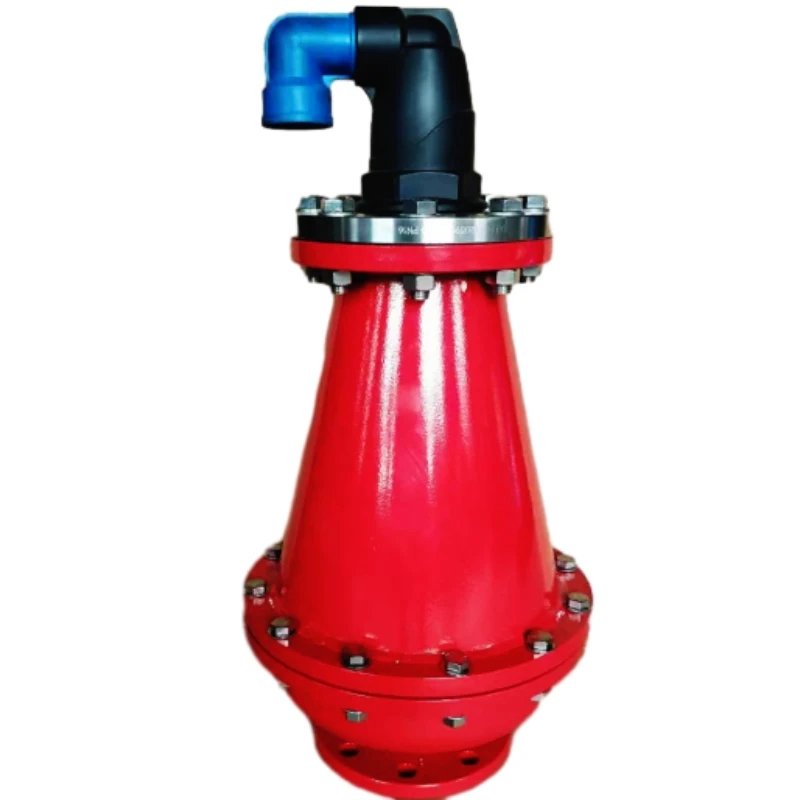irrigation butterfly valve
The Role of Irrigation Butterfly Valves in Efficient Water Management
In contemporary agriculture, efficient water management is crucial to maximizing crop yields and conserving precious water resources. Among the various components essential for effective irrigation systems, butterfly valves play a pivotal role. Known for their simple design, reliability, and effectiveness, irrigation butterfly valves are integral in regulating water flow in irrigation applications. In this article, we will explore the significance of butterfly valves in irrigation systems, their operational mechanisms, and their advantages.
What is a Butterfly Valve?
A butterfly valve is a type of quarter-turn valve that can be used to regulate or isolate fluid flow. It consists of a disc that rotates around a central axis, allowing for efficient control of the flow of water. The valve's design enables it to open and close quickly with minimal resistance, which is particularly beneficial in irrigation systems that require precise water management.
Importance of Butterfly Valves in Irrigation
1. Flow Control One of the primary functions of butterfly valves in irrigation systems is to control water flow. Farmers can adjust the flow rate according to the specific water requirements of different crops or adapt to varying weather conditions. This ability to modulate flow ensures that plants receive an adequate supply of water, reducing waste and optimizing resources.
2. Isolation Butterfly valves are effective in isolating sections of an irrigation system for maintenance or repairs without needing to shut down the entire system. This feature ensures minimal disruption to water supply, allowing farmers to maintain productivity while managing their irrigation infrastructure.
3. Durability Made from materials such as PVC, stainless steel, or cast iron, butterfly valves are designed to withstand harsh environmental conditions, including exposure to chemicals, UV rays, and varying temperatures. This durability means fewer replacements and lower maintenance costs over time, making them a cost-effective option for farmers.
4. Space Efficiency Compared to other types of valves, butterfly valves are compact and lightweight. Their design requires less space for installation, which is an essential consideration in larger irrigation systems where space may be limited. This advantage makes them suitable for both large-scale agricultural operations and smaller gardening applications.
irrigation butterfly valve

Operational Mechanism
The operation of a butterfly valve is straightforward. The valve consists of a disc mounted on a shaft, positioned in the center of the pipe. When the handle is turned, the disc rotates a quarter turn, allowing water to pass through when opened and blocking the flow when closed. The simplicity of this mechanism not only facilitates ease of operation but also minimizes the chance of mechanical failure, which is vital in large irrigation networks.
Advantages of Butterfly Valves
Butterfly valves boast several advantages that contribute to their widespread use in irrigation systems
- Low Pressure Drop The design of butterfly valves results in a low-pressure drop across the valve, which is beneficial in maintaining overall irrigation system efficiency. - Speed of Operation The quarter-turn operation allows for rapid opening and closing, facilitating quick adjustments as needed, particularly in response to sudden changes in water requirements.
- Cost-Effective While the initial investment in butterfly valves is reasonable, their durability and low maintenance requirements translate to long-term cost savings for farmers.
Conclusion
Irrigation butterfly valves are an essential component in modern water management practices within agriculture. Their ability to control flow, isolate sections of the irrigation system, and withstand harsh conditions makes them invaluable for farmers seeking to enhance efficiency and sustainability. As agriculture continues to evolve, the role of advanced irrigation technology, including butterfly valves, will remain critical in addressing the challenges of water scarcity and the demand for increased food production. By adopting such efficient components, farmers can contribute to a more sustainable agricultural future.
-
The Smarter Choice for Pedestrian AreasNewsJun.30,2025
-
The Gold Standard in Round Drain CoversNewsJun.30,2025
-
The Gold Standard in Manhole Cover SystemsNewsJun.30,2025
-
Superior Drainage Solutions with Premium Gully GratesNewsJun.30,2025
-
Superior Drainage Solutions for Global InfrastructureNewsJun.30,2025
-
Square Manhole Solutions for Modern InfrastructureNewsJun.30,2025
-
Premium Manhole Covers for Modern InfrastructureNewsJun.30,2025
